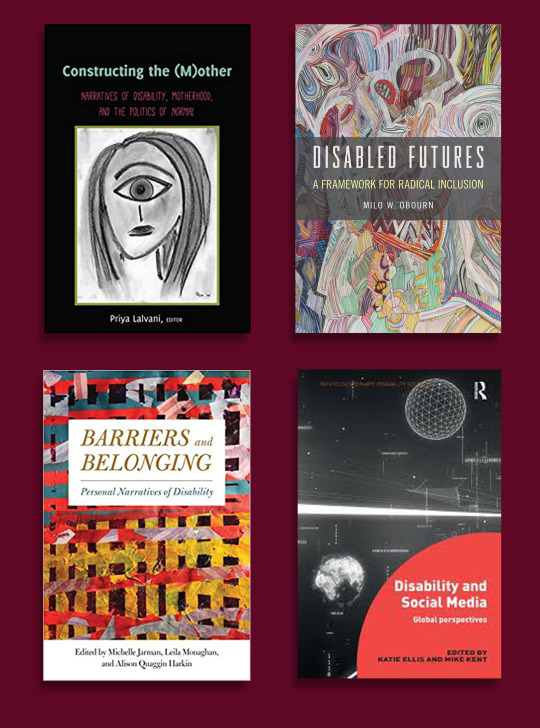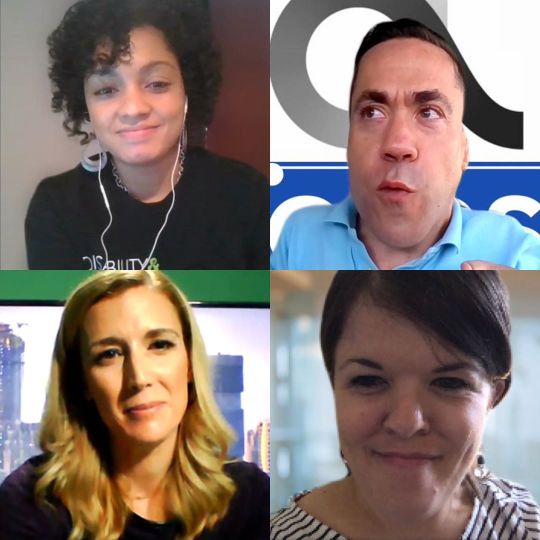#ndeam
Explore tagged Tumblr posts
Video
youtube
What is a "reasonable accommodation" anyway??
#youtube#NDEAM#national disability employment awareness month#americans with disabilities act#reasonable accomodations
0 notes
Photo

NDE Nft drop #nde #ndeah #ndebele #ndesign #nded #nder #ndek #nderakorende #ndellserumbotoxbooster #nderakoreami #ndellserumhq #ndeam #ndes #ndertim #nderekkyai #Ndeo #ndermjetesimimobiliar #nden #Nderakore #ndeahh #ndetavy (presso Rostock Port) https://www.instagram.com/p/Cpn-jUXo1mF/?igshid=NGJjMDIxMWI=
#nde#ndeah#ndebele#ndesign#nded#nder#ndek#nderakorende#ndellserumbotoxbooster#nderakoreami#ndellserumhq#ndeam#ndes#ndertim#nderekkyai#ndeo#ndermjetesimimobiliar#nden#nderakore#ndeahh#ndetavy
0 notes
Text
NDEAM and the Goals of National Disability
NDEAM celebrates the achievements made in legislation and by individuals with disabilities. One example is Judith Heumann, who spearheaded efforts to pass the Rehabilitation Act a half-century ago.
National disability strategies are policy tools that facilitate the implementation of the CRPD (Flynn 2011). They are domestic action plans that include detailed policy measures.
Definitions
The ADA defines disability as a physical or mental impairment that substantially limits one or more major life activities. The ADA prohibits discrimination against people with disabilities in places of public accommodation (such as hotels, restaurants and retail merchants), public entities (city governments and schools) and private organizations that serve the general public, including day care centers and sports stadiums. It also makes it illegal to discriminate against a person because he or she is associated with a person who has a disability.
The definition of disability in the ADA is different from the way that Social Security uses the term to decide if someone has a disability for benefits purposes. This difference is because the ADA is a civil rights law, while Social Security has an administrative process to determine eligibility for disability benefits.
Medical consultants and psychological consultants are physicians and psychologists who review disability cases at the State, regional or national levels. These experts are paid a fee for their services.
Goals
The goal of national disability is to improve life for all people with disabilities. This is accomplished by guarding against abuse; advocating for basic rights; and working to ensure accountability in areas such as education, employment, housing, transportation, and communication.
Disability community advocates used the model of the civil rights movement to compel legislators to pass laws that protect people with disabilities and guarantee access to goods, services, and facilities. The result of these efforts is the Rehabilitation Act and the Americans with Disabilities Act.
To continue to improve the lives of people with disabilities, more work needs to be done at local and state levels. For example, job descriptions, interview questions, and hiring practices that include inclusive language and comply with the ADA are critical. The use of standardized disability data is also helpful, as it can help communities develop better policies and programs. These are the types of strategies that will allow states and communities to meet Healthy People 2020 disability and health objective targets.
Methods
Incorporating disability-relevant content into existing surveys is one way to address limitations on national disability data. Several TAG members emphasized that, in addition to the basic requirement of including questions that identify people with disabilities, it would be useful to conduct research to improve the content and wording of these questions; to add content on disability severity and onset; disability-related costs; barriers to employment; and other issues.
Improving the collection of longitudinal information could also help address limitations on national disability data. For example, enhancing survey-administrative data linkage efforts (such as improving the match between the ACS and Social Security administrative records) might make it possible to measure and interpret changes in disability status over time.
National advocacy organizations for individuals with disabilities offer resources, friendship and collective activism. For example, the Epilepsy Foundation provides support and information for people with seizures and the National Stuttering Association offers support and a sense of self worth to those who stutter.
Conclusions
Almost all national disability strategies mention the need to guarantee accessibility of cultural heritage, cultural institutions and cultural content, with some explicitly stating that this does not necessarily equate with physical accessibility (e.g., Austrian National Action Plan 2021, 57). Specialized projects, programmes and events involving persons with disabilities are highlighted in many strategies as examples of best practice, such as the Lithuanian National Programme (2013, 18), which references the ‘National Professional Choir for Persons with Disabilities’, or the Croat National Strategy (2021, 164), which promotes cooperation between artists with disabilities.
NDEAM is held each October to honor the contributions of America’s workers with disabilities past and present and showcases supportive, inclusive employment policies that benefit employers and employees alike. This article would not have been possible without the tireless work of ODRN’s Protection and Advocacy (P&A) network staff who provided their field experience, legal expertise and time to inform this research. We are grateful for their contributions.
0 notes
Text
National Disability Employment Awareness Month and Addressing Misconceptions of Depression
The month of October marks National Disability Employment Awareness Month (NDEAM). The NDEAM observance was declared in 1988 by the United States Congress in efforts to raise awareness of disability employment needs and to celebrate the many and varied contributions of individuals with all types of disabilities. This year’s NDEAM theme, chosen by the Office […] from NASA https://ift.tt/tNpOdv8
#NASA#space#National Disability Employment Awareness Month and Addressing Misconceptions of Depression#Michael Gabrill
0 notes
Text
Treasurer Garrity & Secretary Walker Highlight National Disability Employment Awareness Month
Harrisburg, PA — As part of National Disability Employment Awareness Month (NDEAM), Treasurer Stacy Garrity and Department of Labor & Industry (L&I) Secretary Nancy A. Walker today encouraged employers to provide supportive, inclusive policies for Pennsylvanians with disabilities. This year’s theme for National Disability Employment Awareness Month is Advancing Access and Equity. This year is…

View On WordPress
0 notes
Text

Disabilities are not just physically identified, there are many invisible disabilities that people live and work with every day but are not recognized because they are not seen. This is a month to help raise awareness for all disabilities in the workplace and make them more inclusive spaces for all to work and thrive in.
💪🌈 #NDEAM #InclusionMatters #AliciaCouri #AudaciousConfidence #Influence #Educate #Inspire #Entertain
0 notes
Text
Weekend Edition: National Disability Employment Awareness Month, Part 1
October is National Disability Employment Awareness Month (NDEAM) and this October is actually its 75th year. Not only that, but 2020 also marks the 30th anniversary of the Americans with Disabilities Act (ADA).
To kick off NDEAM, we are highlighting several new disability studies books recently added to the libraries’ collections.

Constructing the (M)other : Narratives of Disability, Motherhood, and the Politics of Normal edited by Priya Lang
"Constructing the (M)other is a collection of personal narratives about motherhood in the context of a society in which disability holds a stigmatized position. From multiple vantage points, these autoethnographies reveal how ableist beliefs about disability are institutionally upheld and reified. Collectively, they seek to call attention to a patriarchal surveillance of mothering, challenge the trope of the good mother, and dismantle the constructed hierarchy of acceptable children. The stories contained in this volume are counter-narratives of resistance - they are the devices through which mothers push back. Rejecting notions of the otherness of their children, in these essays, mothers negotiate their identities and claim access to the category of normative motherhood. Readers are likely to experience dissonance, have their assumptions about disability challenged, and find their parameters of normalcy transformed. Conceptually grounded in disability studies and narrative theory, this volume is an invitation to rethink common assumptions about families of children with disabilities. It aims to further a dialogue across academic disciplines and professional practices about the constructed nature of disability. This book is a much needed resource for all professionals who seek to participate in the creating of socially just communities and inclusive schools"-- Provided by publisher
Disabled Futures : a Framework for Radical Inclusion by Milo W. Obourn "This project reads disability alongside race, gender, and sexuality in order to problematize the roots of the field of disability studies in the experience and writings of white, straight, cis-gendered men. Obourn coins the term ‘racialized disgender, a resistant way of reading dominant representations of disability"-- Provided by publisher
Barriers and Belonging : Personal Narratives of Disability edited by Michelle Jarman, Leila Monaghan, and Alison Quaggin Harkin
What is the direct impact that disability studies has on the lives of disabled people today? The editors and contributors to this essential anthology, Barriers and Belonging, provide thirty-seven personal narratives that explore what it means to be disabled and why the field of disability studies matters. The editors frame the volume by introducing foundational themes of disability studies. They provide a context of how institutions--including the family, schools, government, and disability peer organizations--shape and transform ideas about disability. They explore how disability informs personal identity, interpersonal and community relationships, and political commitments. In addition, there are heartfelt reflections on living with mobility disabilities, blindness, deafness, pain, autism, psychological disabilities, and other issues. Other essays articulate activist and pride orientations toward disability, demonstrating the importance of reframing traditional narratives of sorrow and medicalization. The critical, self-reflective essays in Barriers and Belonging provide unique insights into the range and complexity of disability experience. Disability and Social Media : Global Perspectives edited by Katie Ellis and Mike Kent
Social media is popularly seen as an important media for people with disability in terms of communication, exchange and activism. These sites potentially increase both employment and leisure opportunities for one of the most traditionally isolated groups in society. However, the offline inaccessible environment has, to a certain degree, been replicated online and particularly in social networking sites. Social media is becoming an increasingly important part of our lives yet the impact on people with disabilities has gone largely unscrutinised. Similarly, while social media and disability are often both observed through a focus on the Western, developed and English-speaking world, different global perspectives are often overlooked. This collection explores the opportunities and challenges social media represents for the social inclusion of people with disabilities from a variety of different global perspectives that include Africa, Arabia and Asia along with European, American and Australasian perspectives and experiences.
#National Disability Employment Awareness Month#ndeam#Oberlin College#Oberlin College Libraries#Weekend edition#reading recommendations#new books
5 notes
·
View notes
Photo




Jonathan (aka @supercaptainjoy) went from being an extremely shy kid in Burbank High's Animation Program to NICKtern on Fairly OddParents and Harvey Beaks to Artist on The Loud House. Listen to his incredibly inspiring story, “Drawing Inspiration” below! 🎨
Nickelodeon proudly supports National Disability Employment Awareness Month! 💚

youtube
#ndeam#national disability employment awareness month#jonathan rodriguez#artists on tumblr#nickelodeon#animation
612 notes
·
View notes
Text
Why National Disability Employment Awareness Month Should Be Every Month
Last month, businesses across the nation exhibited their commitment to tackling disability employment issues in support of National Disability Employment Awareness Month (NDEAM). As November rolls around, those elevator signs announcing NDEAM will find their way to the trash can.
My hope is that companies will remind their employees that we should be including persons with a disability in our workforce every month of the year. We should be fostering this spirit of inclusion every single day, whether or not we have a marketing campaign to accompany it.
Leading companies are making strides towards successfully including disabled persons, yet the disability employment rate remains steady at 29%*. The number one reason for this? A lack of understanding. According to Accenture’s report The Disability Inclusion Advantage, companies “haven’t leveraged the talents of persons with disabilities” due to a lack an understanding of the scope of talent available and the potential benefits, and misconceptions of the cost versus the ROI of disability inclusion.
If companies can become aware of the potential gains of disability inclusion and work towards building programs to include these individuals, we can launch these people into the workforce faster, where they can thrive and contribute.
I am proud to be a co-founder of a business that is committed to disability inclusion 365 days a year. Here are some ways your company, too, can continue to foster this spirit of inclusion beyond the month of October.
Actively hire and promote persons with a disability. Companies should encourage, engage, and promote persons with disabilities, making sure these people are properly represented in their workplace.
Assist your employees by providing them access to accessibility tools and support programming. Furthermore, educate your non-disabled employees so they can be more supportive to those who need extra accommodations. Work to foster a community of understanding and acceptance.
Document your commitment to fostering a diverse workforce. What better way to educate other companies on diversity programming than by showing yours off? Don’t feel nervous about bragging. Your commitment can and will inspire other companies to participate.
Our under-represented communities deserve to be noticed all days of the year. The future of work is inclusive, are you?
* https://www.accenture.com/_acnmedia/pdf-89/accenture-disability-inclusion-research-report.pdf
Visit our blog at https://www.wearecapable.org/blog
#chronicallyill#disability#disabled#chronicillness#chronic community#startup#developers & startups#blogs#lymedisease#ndeam#disabilities#abilities#strength#chronicillnesswarrior
1 note
·
View note
Link
Learn from disabled people about why the subminimum wage is so damaging.
25 notes
·
View notes
Photo

National #Disability #Employment #Awareness Month 2021 The theme for NDEAM 2021, “America’s Recovery: Powered by #Inclusion,” reflects the importance of ensuring that people with #disabilities have full access to employment and #community involvement during the national recovery from the #COVID19 pandemic. #NDEAM is held each #October to commemorate the many and varied contributions of people with disabilities to America’s #workplaces and #economy. Browse our website for ideas and resources for employers, community organizations, state and local governments, #advocacy groups and schools to participate in celebrating NDEAM through events and activities centered around the theme of “America’s Recovery: Powered by Inclusion.” Learn more at: https://www.dol.gov/agencies/odep/initiatives/ndeam #equality #workplace #disabled #covid #disabilityawareness #invisibledisabilities #ada #disabilityawareness #servicedogs #servicedog #accommodations #poweredbyinclusion https://www.instagram.com/p/CVicsi8rn6U/?utm_medium=tumblr
#disability#employment#awareness#inclusion#disabilities#community#covid19#ndeam#october#workplaces#economy#advocacy#equality#workplace#disabled#covid#disabilityawareness#invisibledisabilities#ada#servicedogs#servicedog#accommodations#poweredbyinclusion
0 notes
Photo

National #Disability #Employment #Awareness Month 2021 The theme for NDEAM 2021, “America’s Recovery: Powered by #Inclusion,” reflects the importance of ensuring that people with #disabilities have full access to employment and #community involvement during the national recovery from the #COVID19 pandemic. #NDEAM is held each #October to commemorate the many and varied contributions of people with disabilities to America’s #workplaces and #economy. Browse our website for ideas and resources for employers, community organizations, state and local governments, #advocacy groups and schools to participate in celebrating NDEAM through events and activities centered around the theme of “America’s Recovery: Powered by Inclusion.” Learn more at: https://www.dol.gov/agencies/odep/initiatives/ndeam #equality #workplace #disabled #covid #disabilityawareness #invisibledisabilities #ada #disabilityawareness #servicedogs #servicedog #accommodations #poweredbyinclusion https://www.instagram.com/p/CVicqFVrJ6X/?utm_medium=tumblr
#disability#employment#awareness#inclusion#disabilities#community#covid19#ndeam#october#workplaces#economy#advocacy#equality#workplace#disabled#covid#disabilityawareness#invisibledisabilities#ada#servicedogs#servicedog#accommodations#poweredbyinclusion
0 notes
Photo

Thank you to @thinklikeclint for inviting me to participate on the @alticeusa #ADA30 #NDEAM panel discussion today that was moderated by @news12nj @kristinabehr! During our discussion, we explored the importance of the #ADA for people with disabilities, the impact and opportunities presented by #COVID19, and the future of hiring people with disabilities. We also explored what needs to be done to address the barriers that still exist for the employment of people with disabilities. During our discussion, we realized that we’ve come a long way but have a long road ahead. We’re in this together. Game on! https://www.instagram.com/p/CGnn0SLJn27/?igshid=4ucqyi0fd9os
0 notes
Photo

“A Straight Business Talk”
Farmers, merchants, industrialists...”the keystone of this carefully considered plan...is the hearty, intelligent, and untiring cooperation of employers throughout the whole United States.”
October is National Disability Employment Month, an awareness campaign with roots going back to 1945. This post-World War I educational pamphlet may be read online at the Social Welfare History Image Portal.
20 notes
·
View notes
